Recent Faculty Publications
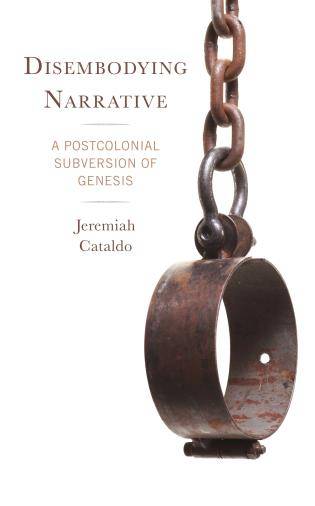
Jeremiah Cataldo
Long believed to bear witness to the beginning of all life, the Bible's first book, Genesis, has been plumbed by a cornucopia of theologies and philosophies for ideas about social organization, human relationships, class, gender and gender roles, marriage, land rights, private property, and so much more. For many readers, assumptions about a divine creator, whose eye is cast upon a favored community, are at the heart of Western societies and politics and reside at the core of many national foundation myths. Yet despite all this, Genesis is not a frequent subject of postcolonial analyses seeking to expose the rootedness of inequalities within dominant social, political, and economic institutions. At times provacative, at others conciliatory, Jeremiah Cataldo explores how postcolonialism's rudeness, anger, and subversiveness are challenges to dominant traditions of interpreting Genesis and how those traditions influence who we are, how we relate to each other, how we read the Bible, and why, despite an increasingly globalized and interconnected world, we passionately cling to what divides us.
Published November 2023, Lexington Books/Fortress Academic

Joel Stillerman
After Pinochet's dictatorship ended in Chile in 1990, the country experienced a rapid decline in poverty along with a quickly growing economy. As a result, Chile's middle class expanded dramatically, echoing trends seen across the Global South as neoliberalism took firm hold in the 1990s and the early 2000s. Identity Investments examines the politics and consumption practices of this vast and varied fraction of the Chilean population, seeking to better understand their value systems and the histories that informed them. Using participant observation, interviews, and photographs, Joel Stillerman develops a unique typology of the middle class, made up of activists, moderate Catholics, pragmatists, and youngsters. This typology allows him to unearth the cultural, political, and religious roots of middle-class market practices in contrast with other studies focused on social mobility and exclusionary practices. The resultant contrast in backgrounds, experiences, and perspectives of these four groups animates this book and extends an emerging body of scholarship focused on the connections between middle-class market choices and politics in the Global South, with important implications for Chile's recent explosive political changes.
Published in February 2023. Stanford University Press.

Peter Wampler
"Growing a Groundwater Schmutzdecke," by Peter Wampler and Roderick M. Morgan
Biosand filters are a simple point-of-use water treatment technology that has effectively treated water in developing countries since the concept was introduced in the early 1990s. But the technology has a couple of features that make it difficult to use effectively and sustainably. Since 2013, as part of interdisciplinary efforts to improve access to clean drinking water in Ghana and Haiti, Wampler and Morgan have been exploring a new well contruction technique using in situ filtration. This technique duplicates the slow sand filtration and biological activity that make biosand filters effective while overcoming some of the disadvantages of the technique.
Published July/August 2022 in Water Resources Impact.

Jeremiah Cataldo
When it comes to sex, the Bible is marred by inequality. To address the consequences of that, What the Bible Says About Sex asserts that modern perspectives on sexuality and gender should be separated from the more constraining, historical views of traditional biblical interpretation.
What does the Bible say about sexuality? How have traditions of biblical interpretation influenced our understanding of sex and gender? What the Bible Says About Sex answers that and many other questions. Not shy, it analyzes why the Church claimed dominion over marriage, while the female body remained a source of potential evil. It wrestles with how sexuality is used, not only in the past but also in the present, to reinforce notions of honor, and how it can be used to manipulate others. Deftly, it handles a discussion of semen as both profane and the "seed of life." It looks brazenly at the pornographic and the erotic passages of the Bible, and how traditions of interpretation veiled them. With the Bible frequently invoked to support arguments in the present age over the moral limits of sexuality and gender, having a greater awareness of what the Bible says about sex and how it is, and has been, interpreted is critical now more than ever.
Published in August 2022. Routledge.
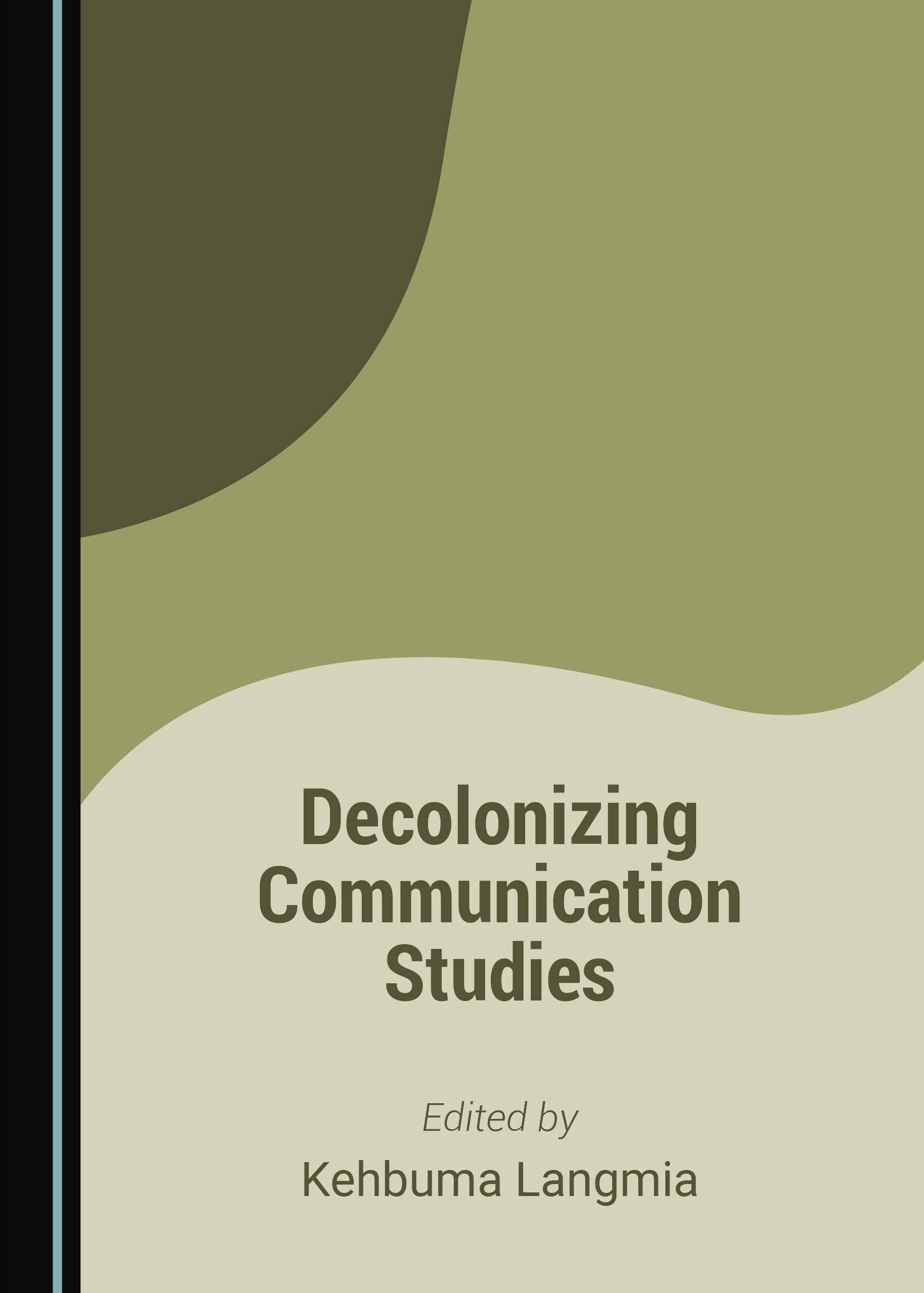
Melba Velez Ortiz
Dr. Melba Velez Ortiz's work was recently published in "Decolonizing Communication Studies". Her work, entitled "(Re)Introducing Medu-Nefer: Ancient Egypt’s Rhetorical Art" is featured in chapter five.
Published in March 2022. Find the entire work here.
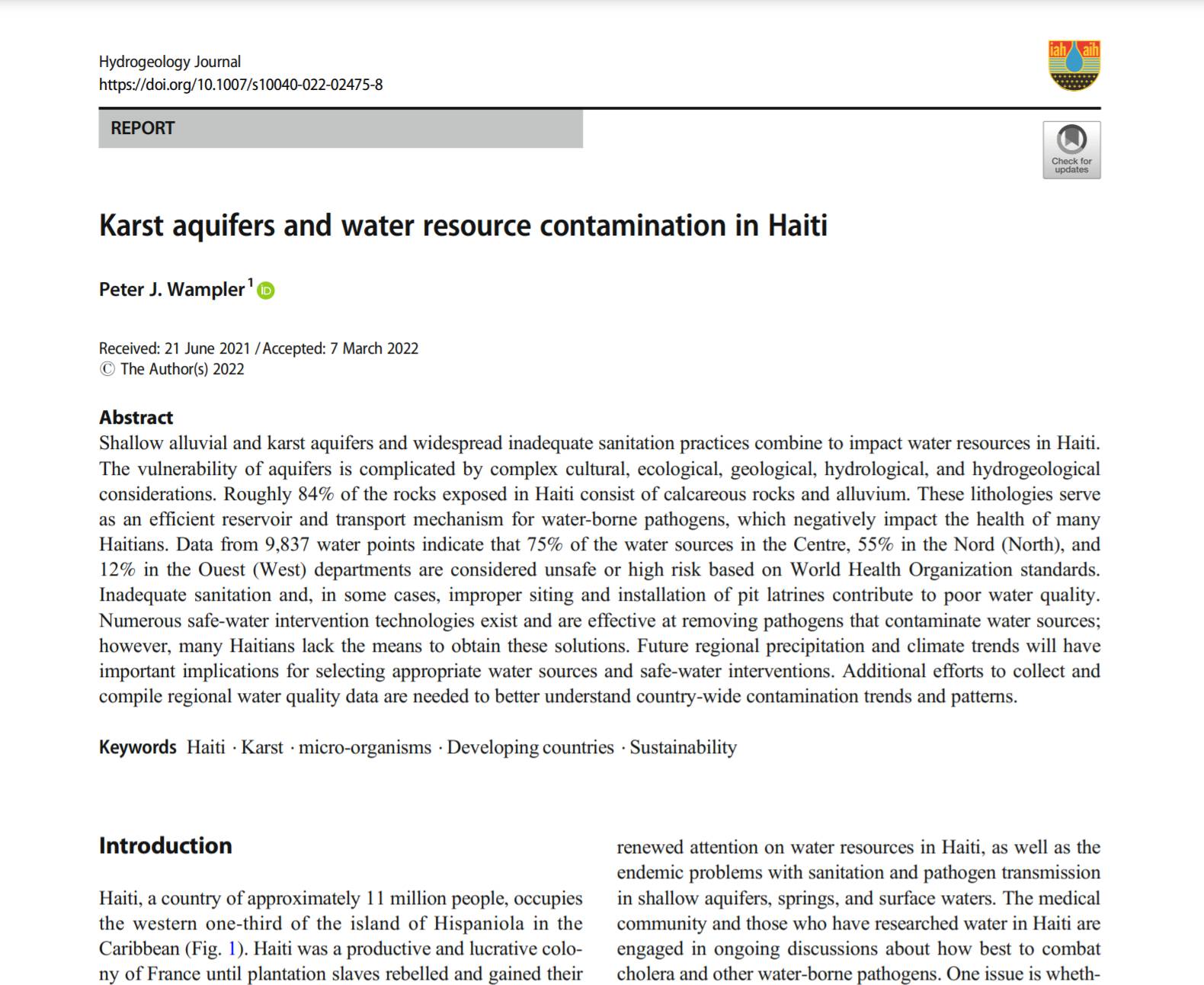
Peter Wampler
Check out Dr. Peter Wampler's recent publication in the Hydrogeology Journal! Dr. Wampler explained that "this article, entitled 'Karst aquifers and water resource contamination in Haiti', has been a few COVID-crazed years in the making, but I am happy that it is finally published and openly accessible to all through open access publication. It is part of a special issue about Haiti".
Published in March 2022 in the Hydrogeology Journal.
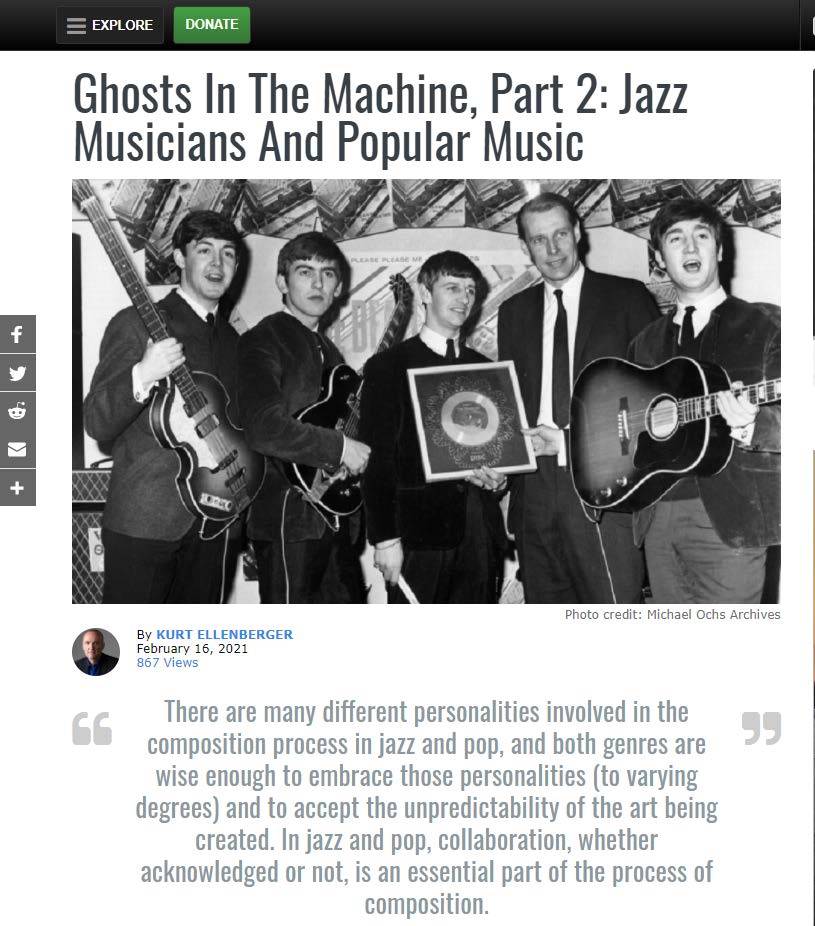
Kurt Ellenberger
Ghosts in the Machine: Jazz Musicians and Popular Music
Jazz musicians have played an important role in the development of popular music from the 1960s until today (we should also remember that jazz actually was popular music from the 1920s-1940s). For those who know the history of the music, this comes as no surprise.
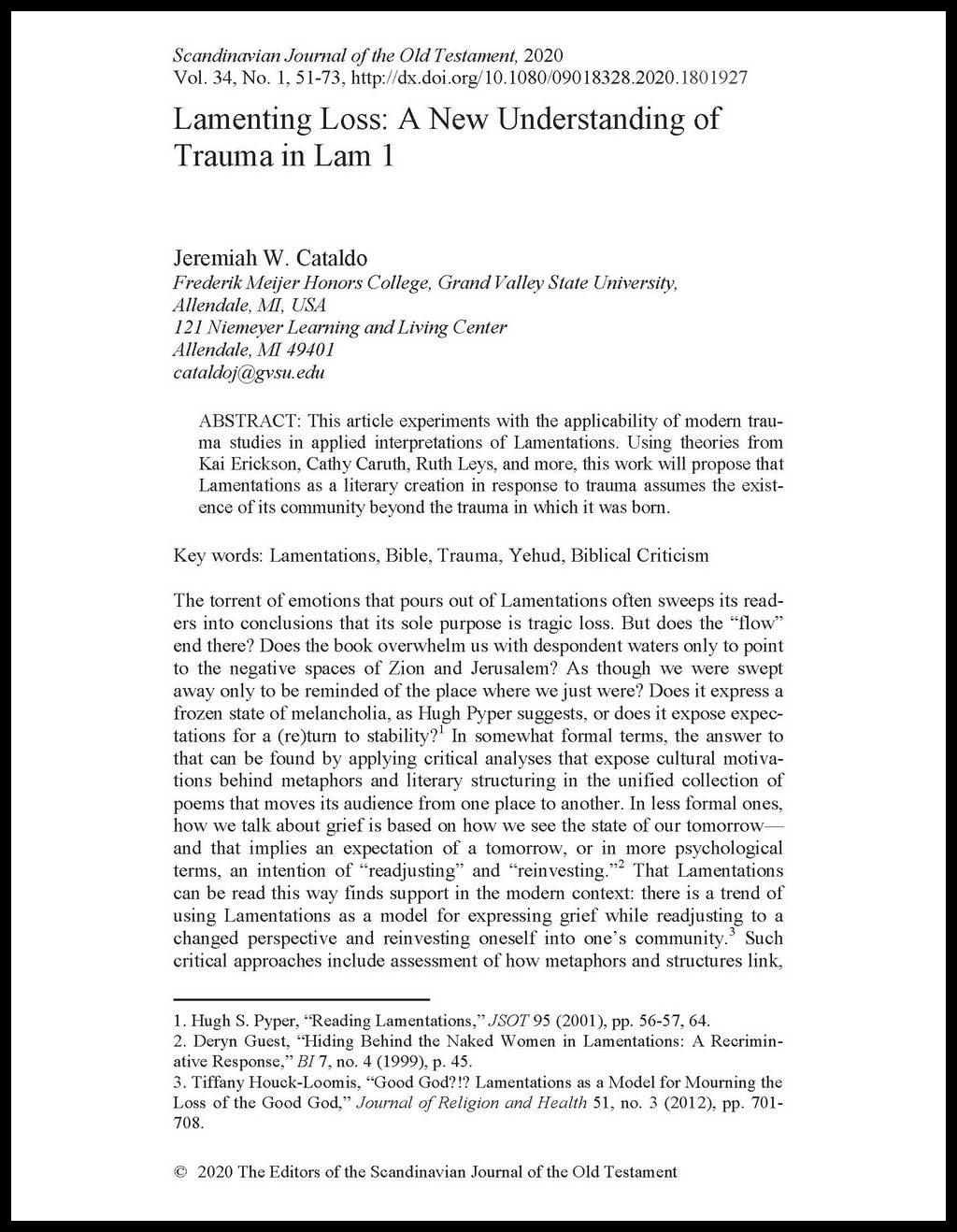
Jeremiah Cataldo
Lamenting Loss: A New Understanding of Trauma in Lam 1
This article experiments with the applicability of modern trauma studies in applied interpretations of Lamentations. Using theories from Kai Erickson, Cathy Caruth, Ruth Leys, and more, this work proposes that Lamentations as a literary creation in response to trauma assumes the existence of its community beyond the trauma in which it was born.
Published in August 2020. Scandinavian Journal of the Old Testament website.

Kurt Ellenberger
Jack Hues and His Muse: The First Thing I Need Is Music
In the world of rock and pop music, the most successful musicians and groups tend to emerge in their early 20s with a burst of creativity that few can sustain past a handful of recordings. Unlike in classical music and jazz, where musicians and composers continually develop and evolve well into old age, rock musicians generally do not. But there are some who do, and Jack Hues, the lead singer and guitarist from Wang Chung, one of the most successful songwriting duos of the 1980s, is one of them.

Kurt Ellenberger
The Touch of Your Lips: The Colors of Jazz Piano
This three-part series explores "touch" on the piano. How is it possible for a pianist to create a unique sound with a variety of colors and timbres? When we talk about this, we use the term "touch," which means that the way the pianist is hitting the keys, his/her "touch," is creating an individual sound that is described as being warm, crisp, rich, dark or a host of other descriptive adjectives. Is there such a thing as "touch" that results in the production of tone color on the instrument? This question has perplexed and beguiled musicians and acousticians since the keyboard was invented, and the answer was, and perhaps still is depending on who you ask, mysterious and almost preternatural, somewhere in the twilight zone between "fact and fantasy."
Published in April 2020. All About Jazz Part 1 | Part 2 | Part 3

Melba Velez Ortiz
Maatian Ethics in a Communication Context explores the ethical principle of Maat: the guiding principle of harmony and order that permeated classical African political and civil life.
The book provides a rigorous, communication-focused account of the ethical wisdom ancient Africans cultivated and is evidenced in the form of recovered written texts, mythology, stelae, prescriptions for just speech, and the hieroglyphic system of writing itself. Moving beyond colonial stereotypes of ancient Africans, the book offers insight into the African value systems that positioned humans as inextricably embedded in nature, and communication theory that anchors good communication in careful listening habits as the foundational moral virtue. Expanding on the work of Maulana Karenga, Molefi Kete Asante and other groundbreaking scholars, the book presents a picture of civilizations with a shared lust for life, a spiritual connection to scientific speech, and the veneration of ancestors as deeply connected to the pursuit of wisdom.
Offering an examination of Maat from a specifically communication ethics perspective, this book will be of great interest to scholars and students of Communication Ethics, African philosophy, Rhetorical theory, Africana Studies and Ancient History.
Published in March 2020. Routledge.
[1581705835].jpg)
Roger Gilles
1890s Women's Bicycle Racing: Forgotten, But Why?
This article discusses six factors that have contributed to what Clare S. Simpson called the “paucity of primary and secondary sources” related to women’s bicycle racing of the 1890s: efforts by the League of American Wheelman to suppress the sport, and the resulting lack of statistical compilations of the women’s accomplishments; the East Coast bias that prevailed then and through the twentieth century; the prominence of local, as opposed to national, sports coverage in the 1890s; the difficulty of accessing contemporary newspaper accounts of the women’s races; the brevity of the era itself, which lasted only a few years; and good old-fashioned gender bias. Fortunately, with the recent burst publications about nineteenth century women’s racing, we can now look forward to a more balanced representation of bicycle racing history.
Published in November 2019. Sport History Review
[1571770439].jpg)
Craig Benjamin
The Routledge Companion to Big History
The Routledge Companion to Big History guides readers though the variety of themes and concepts that structure contemporary scholarship in the field of big history.
The volume is divided into five parts, each representing current and evolving areas of interest to the community, including big history’s relationship to science, social science, the humanities, and the future, as well as teaching big history and ‘little big histories’. Considering an ever-expanding range of theoretical, pedagogical and research topics, the book addresses such questions as what is the relationship between big history and scientific research, how are big historians working with philosophers and religious thinkers to help construct ‘meaning’, how are leading theoreticians making sense of big history and its relationship to other creation narratives and paradigms, what is ‘little big history’, and how does big history impact on thinking about the future? The book highlights the place of big history in historiographical traditions and the ways in which it can be used in education and public discourse across disciplines and at all levels.
A timely collection with contributions from leading proponents in the field, it is the ideal guide for those wanting to engage with the theories and concepts behind big history.
Published in September 2019. Routledge.
[1571770161].jpg)
Amy McFarland
Creating Resilient Interventions to Food Waste: Aligning and Leveraging Systems and Design Thinking
Food Waste Management: Solving the Wicked Problem is an edited collection that focuses on the crucial sustainability challenge of reducing food waste at the level of consumer-society. Providing an in-depth, research-based overview of the multifaceted problem, it considers environmental, economic, social and ethical factors. Perspectives included in the book address households, consumers, and organizations, and their role in reducing food waste. Rather than focusing upon the reasons for food waste itself, the chapters develop research-based solutions for the problem, providing a much-needed solution-orientated approach that takes multiple perspectives into account.
Food waste interventions often end up shifting waste instead of reducing it. In their chapter, Danielle Lake, Amy McFarland, and Jody Vogelzang suggest efforts to ameliorate the food waste crisis could be better served through integrating theories and tools from systems thinking and design thinking. They analyse several systemic influences on food change and then recommend ten practical strategies for fostering and supporting change agents. Lake et al. suggest these ten intervention strategies will help change agents uncover and leverage the otherwise hidden interconnections between social, economic, and political systems. These strategies may open opportunities to address the underlying factors contributing to food waste and yield more inclusive, effective, and sustainable change.
Published in September 2019. Springer Professional website.

Jeremiah Cataldo
Imagined Worlds and Constructed Differences in the Hebrew Bible
The purpose of this volume is twofold: to introduce readers to the study of cultural memory and identity in relation to the Hebrew Bible, and to set up strategies for connecting studies of the historical contexts and literature of the Bible to parallel issues in the present day. The volume questions how we can better understand the divide between insider and outsider and the powerful impact of prejudice as a basis for preserving differences between "us" and "them"? In turn the contributors question how such frameworks shape a community's self-perception, its economics and politics. Guided by the general framework of Anderson's theory of nationalism and the outsider, such issues are explored in related ways throughout each of the contributions. Each contribution focuses on social, economic, or political issues that have significantly shaped or influenced dominant elements of cultural memory and the construction of identity in the biblical texts. Together the contributions present a larger proposal: the broad contours of memory and identity in the Bible are the products of a collective desire to reshape the social-political world.
Published in August 2019. Bloomsbury.
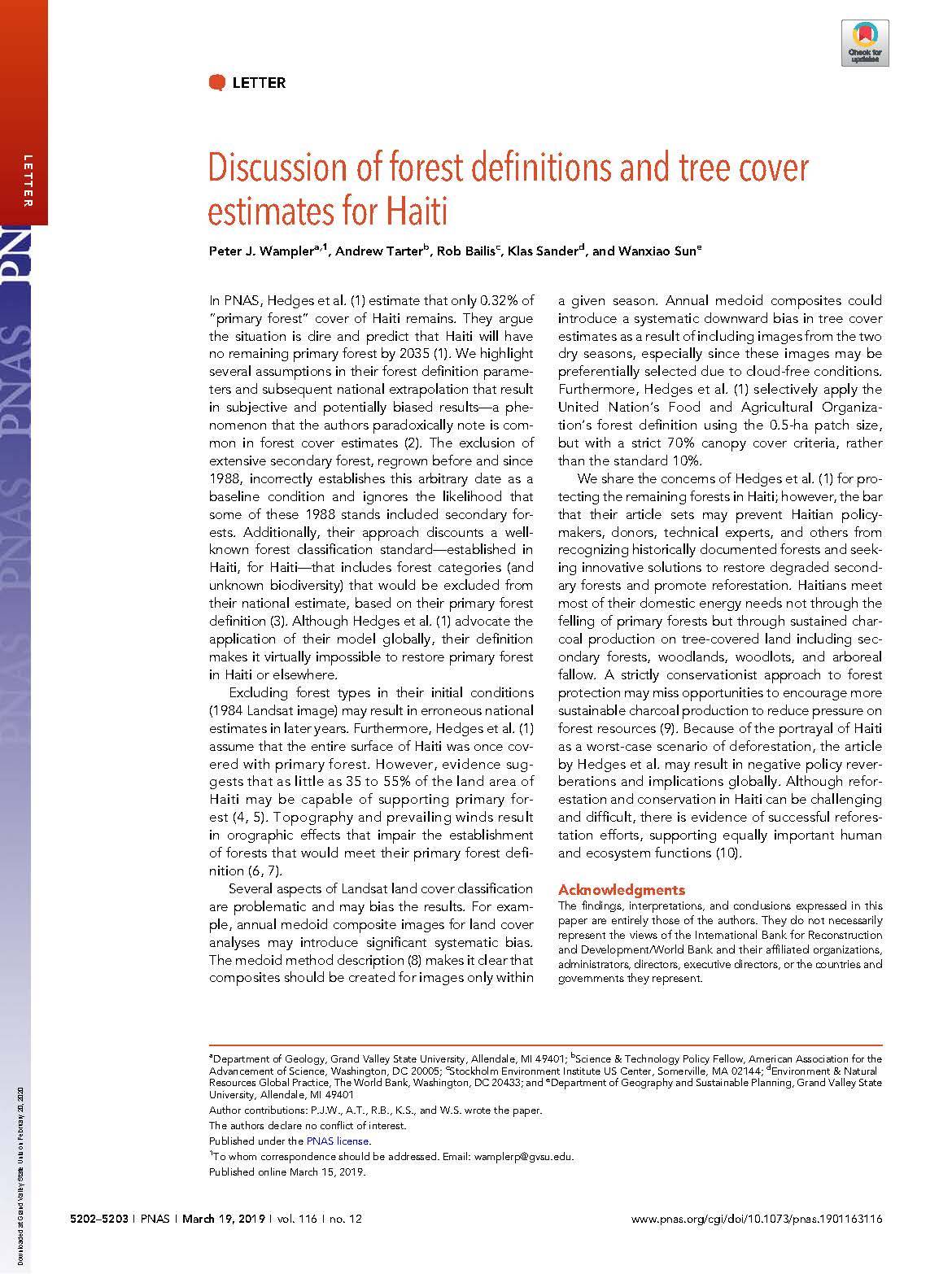
Peter Wampler
Discussion of Forest Definitions and Tree Cover Estimates for Haiti
Hedges et al. estimate that only 0.32% of “primary forest” cover of Haiti remains. They argue the situation is dire and predict that Haiti will have no remaining primary forest by 2035. We highlight several assumptions in their forest definition parameters and subsequent national extrapolation that result in subjective and potentially biased results—a phenomenon that the authors paradoxically note is common in forest cover estimates. The exclusion of extensive secondary forest, regrown before and since 1988, incorrectly establishes this arbitrary date as a baseline condition and ignores the likelihood that some of these 1988 stands included secondary forests. Additionally, their approach discounts a well-known forest classification standard—established in Haiti, for Haiti—that includes forest categories (and unknown biodiversity) that would be excluded from their national estimate, based on their primary forest definition. Although Hedges et al. advocate the application of their model globally, their definition makes it virtually impossible to restore primary forest in Haiti or elsewhere.
Published in March 2019. PNAS website.

Roger Gilles
Women on the Move: The Forgotten Era of Women's Bicycle Racing
Spurred by the emergence of the “safety” bicycle and the ensuing cultural craze, women’s professional bicycle racing thrived in the United States from 1895 to 1902. For seven years, female racers drew large and enthusiastic crowds across the country, including Cleveland, Detroit, Indianapolis, Chicago, Minneapolis, St. Louis, Kansas City, and New Orleans—and many smaller cities in between. Unlike the trudging, round-the-clock marathons the men (and their spectators) endured, women’s six-day races were tightly scheduled, fast-paced, and highly competitive. The best female racers of the era—Tillie Anderson, Lizzie Glaw, and Dottie Farnsworth—became household names and were America’s first great women athletes. Despite concerted efforts by the League of American Wheelmen to marginalize the sport and by reporters and other critics to belittle and objectify the women, these athletes forced turn-of-the-century America to rethink strongly held convictions about female frailty and competitive spirit.
By 1900 many cities began to ban the men’s six-day races, and it became more difficult to ensure competitive women’s races and attract large enough crowds. In 1902 two racers died, and the sport’s seven-year run was finished—and it has been almost entirely ignored in sports history, women’s history, and even bicycling history. Women on the Move tells the full story of America’s most popular arena sport during the 1890s, giving these pioneering athletes the place they deserve in history.
Published in October 2018. University of Nebraska Press.
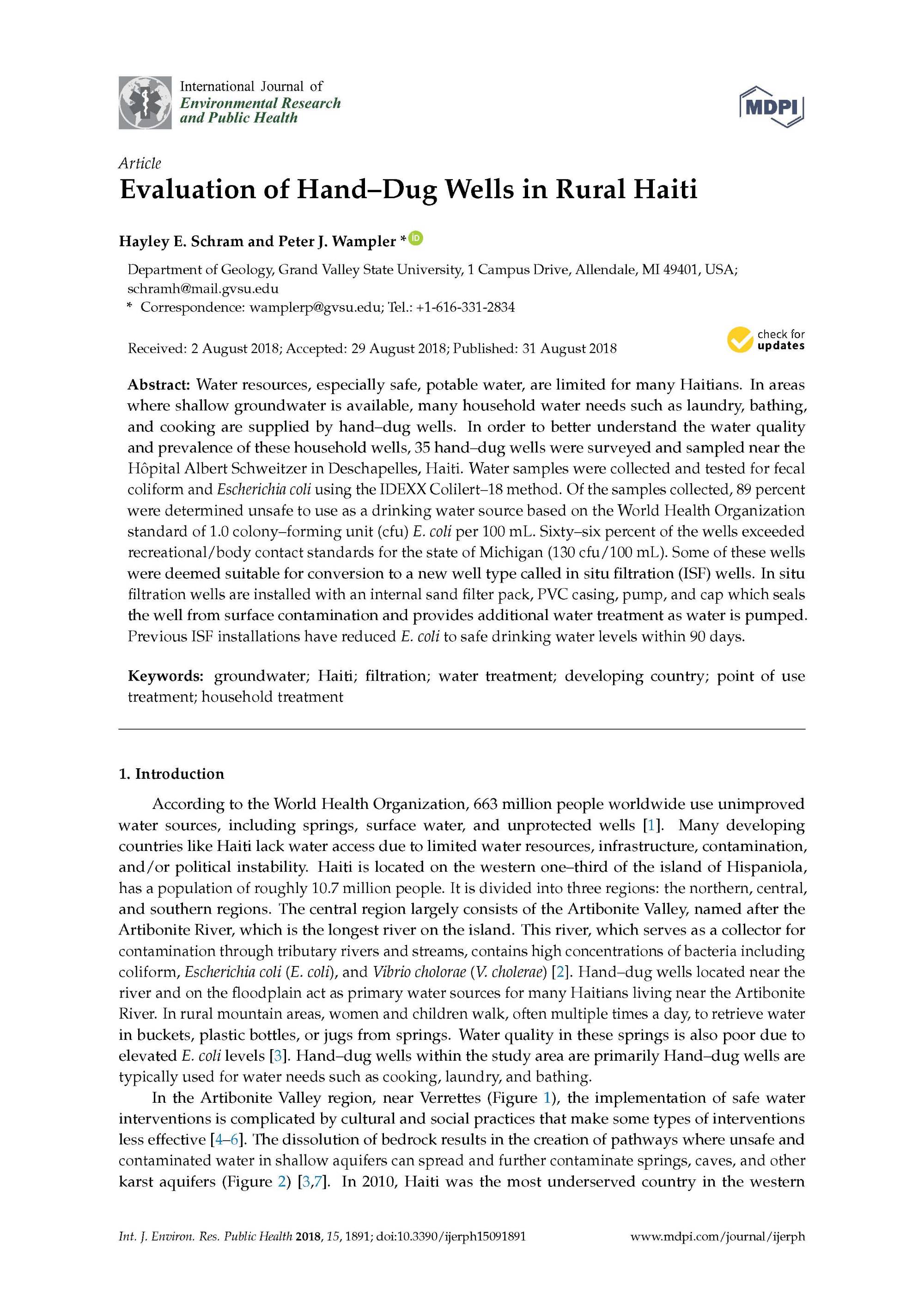
Peter Wampler
Evaluation of Hand-Dug Wells in Rural Haiti
Water resources, especially safe, potable water, are limited for many Haitians. In areas where shallow groundwater is available, many household water needs such as laundry, bathing, and cooking are supplied by hand–dug wells. In order to better understand the water quality and prevalence of these household wells, 35 hand–dug wells were surveyed and sampled near the Hôpital Albert Schweitzer in Deschapelles, Haiti. Water samples were collected and tested for fecal coliform and Escherichia coli using the IDEXX Colilert–18 method. Of the samples collected, 89 percent were determined unsafe to use as a drinking water source based on the World Health Organization standard of 1.0 colony–forming unit (cfu) E. coli per 100 mL. Sixty–six percent of the wells exceeded recreational/body contact standards for the state of Michigan (130 cfu/100 mL). Some of these wells were deemed suitable for conversion to a new well type called in situ filtration (ISF) wells. In situ filtration wells are installed with an internal sand filter pack, PVC casing, pump, and cap which seals the well from surface contamination and provides additional water treatment as water is pumped. Previous ISF installations have reduced E. coli to safe drinking water levels within 90 days.
Published in August 2018. IJERPH website.
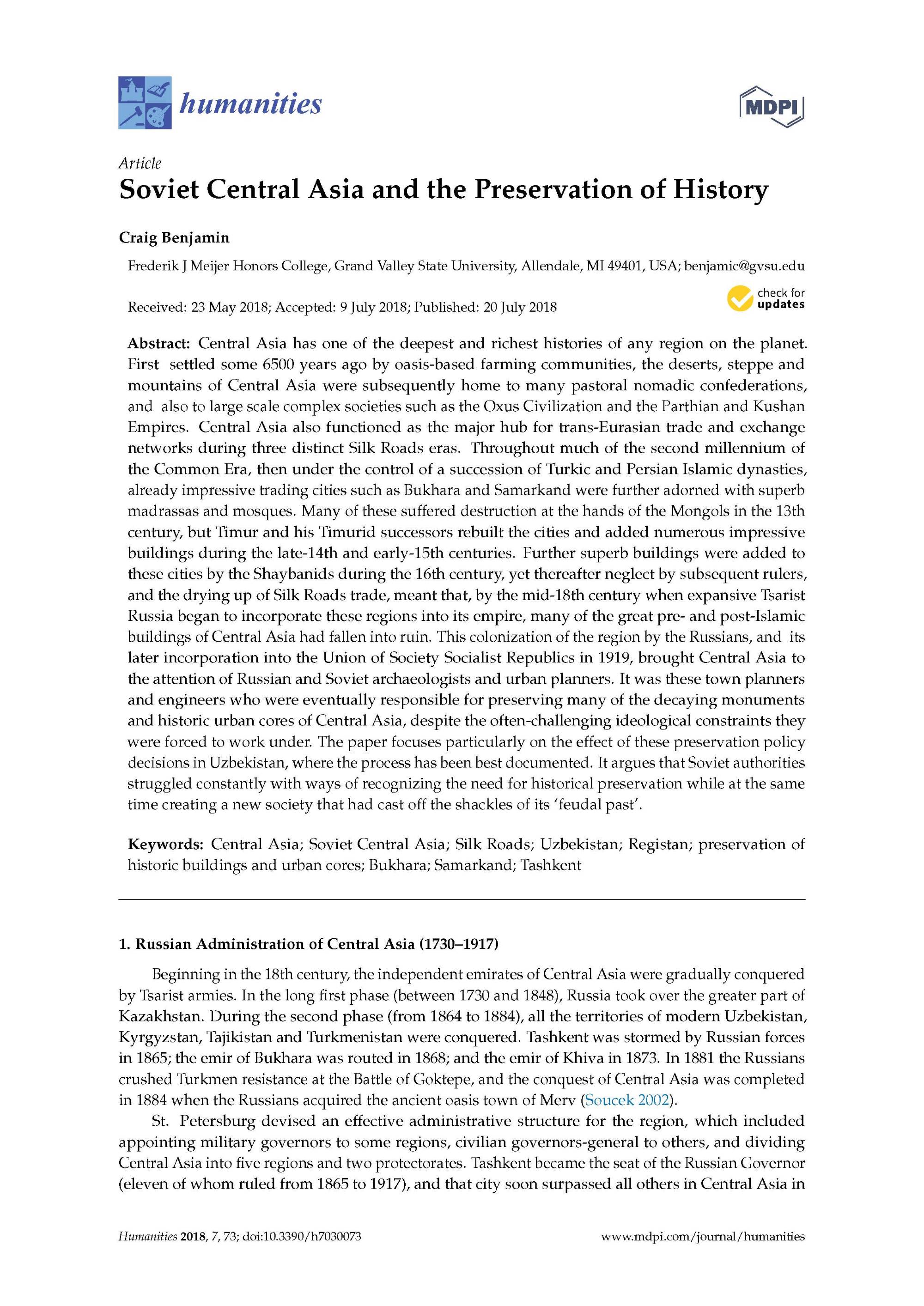
Craig Benjamin
Soviet Central Asia and the Preservation of History
Central Asia has one of the deepest and richest histories of any region on the planet. First settled some 6500 years ago by oasis-based farming communities, the deserts, steppe and mountains of Central Asia were subsequently home to many pastoral nomadic confederations, and also to large scale complex societies such as the Oxus Civilization and the Parthian and Kushan Empires. Central Asia also functioned as the major hub for trans-Eurasian trade and exchange networks during three distinct Silk Roads eras. Throughout much of the second millennium of the Common Era, then under the control of a succession of Turkic and Persian Islamic dynasties, already impressive trading cities such as Bukhara and Samarkand were further adorned with superb madrassas and mosques. Many of these suffered destruction at the hands of the Mongols in the 13th century, but Timur and his Timurid successors rebuilt the cities and added numerous impressive buildings during the late-14th and early-15th centuries. Further superb buildings were added to these cities by the Shaybanids during the 16th century, yet thereafter neglect by subsequent rulers, and the drying up of Silk Roads trade, meant that, by the mid-18th century when expansive Tsarist Russia began to incorporate these regions into its empire, many of the great pre- and post-Islamic buildings of Central Asia had fallen into ruin. This colonization of the region by the Russians, and its later incorporation into the Union of Society Socialist Republics in 1919, brought Central Asia to the attention of Russian and Soviet archaeologists and urban planners. It was these town planners and engineers who were eventually responsible for preserving many of the decaying monuments and historic urban cores of Central Asia, despite the often-challenging ideological constraints they were forced to work under. The paper focuses particularly on the effect of these preservation policy decisions in Uzbekistan, where the process has been best documented. It argues that Soviet authorities struggled constantly with ways of recognizing the need for historical preservation while at the same time creating a new society that had cast off the shackles of its ‘feudal past’.
Published in July 2018. Humanities website.
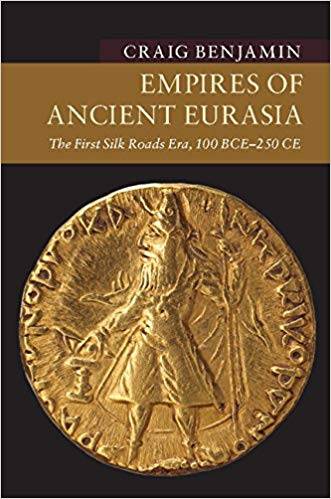
Craig Benjamin
Empires of Ancient Eurasia: The First Silk Roads Era, 100 BCE – 250 CE
The Silk Roads are the symbol of the interconnectedness of ancient Eurasian civilizations. Using challenging land and maritime routes, merchants and adventurers, diplomats and missionaries, sailors and soldiers, and camels, horses and ships, carried their commodities, ideas, languages and pathogens enormous distances across Eurasia. The result was an underlying unity that traveled the length of the routes, and which is preserved to this day, expressed in common technologies, artistic styles, cultures and religions, and even disease and immunity patterns. In words and images, Craig Benjamin explores the processes that allowed for the comingling of so many goods, ideas, and diseases around a geographical hub deep in central Eurasia. He argues that the first Silk Roads era was the catalyst for an extraordinary increase in the complexity of human relationships and collective learning, a complexity that helped drive our species inexorably along a path towards modernity.
Published in April 2018. Cambridge University Press.
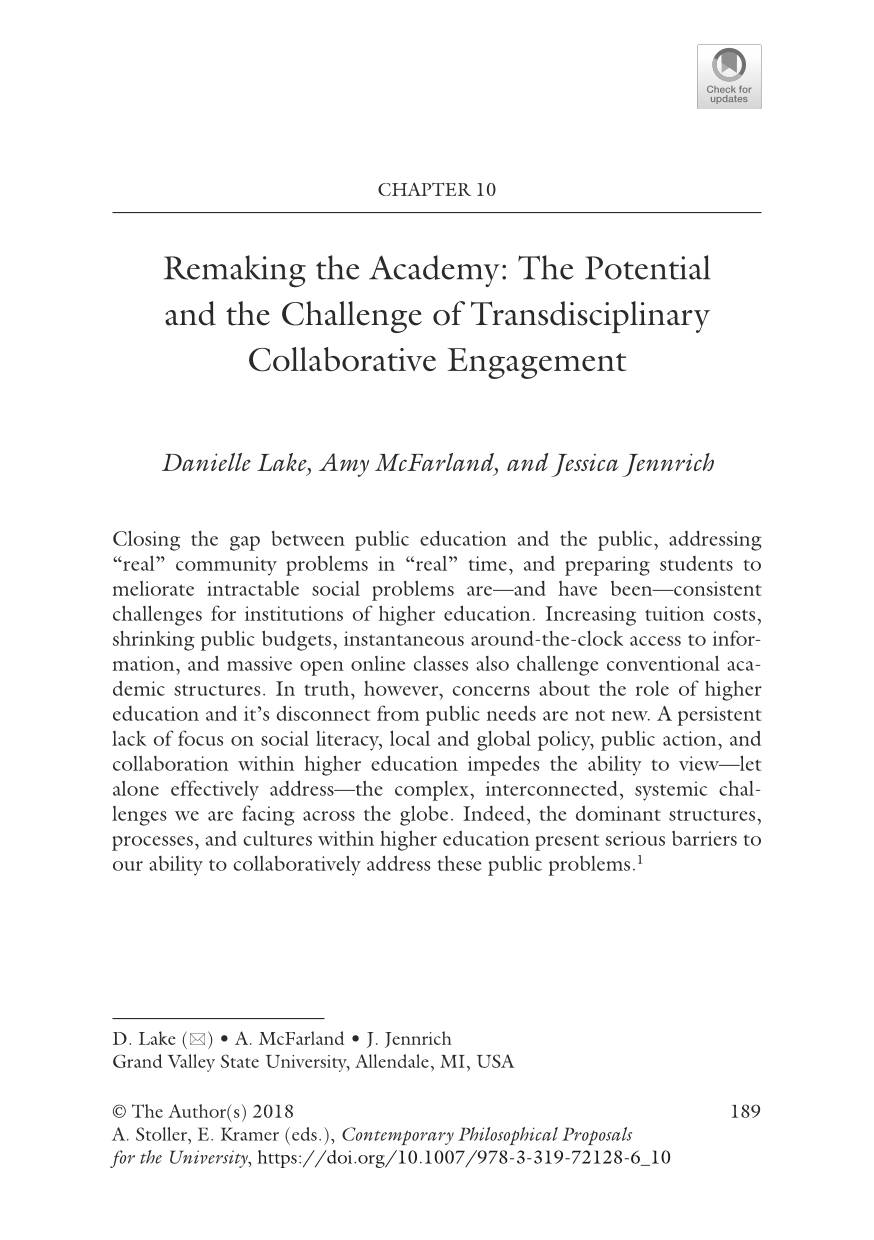
Amy McFarland
Remaking the Academy: The Potential and the Challenge of Transdisciplinary Collaborative Engagement
In Contemporary Philosophical Proposals for the University Toward a Philosophy of Higher Education, an edited collection that brings together a robust range of philosophers who offer theoretically and critically informed proposals regarding the aims, policies, and structures of the university. The collection fills a major gap in the landscape of higher education theory and practice while concurrently reviving a long and often forgotten discourse within the discipline of philosophy. It includes philosophers from across the globe representing disparate philosophical schools, as well as various career stages, statuses, and standpoints within the university. There is also a diversity in method, approach and style, which varies from personal narratives and case studies, to philosophical genealogies, to traditional philosophical essays, and to systematic theories. The collection can serve as a theoretical resource for critically minded administrators and faculty who wish to analyze and change policies and structures at their home institutions. It will introduce them to a wide range of possible educational imaginaries, as well as provide them with productive suggestions for pragmatic change on campuses.
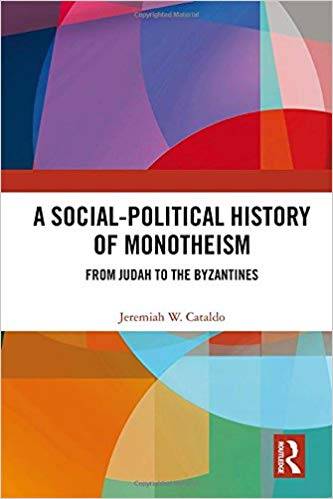
Jeremiah Cataldo
A Social-Political History of Monotheism: From Judah to the Byzantines
In A Social-Political History of Monotheism, Cataldo shows how political concerns were fundamental to the development of Judeo-Christian monotheism. Beginning with the disruptive and devastating historical events that shook early Israelite culture and ending with the seemingly victorious emergence of Christianity under the Byzantine Empire, this work highlights critical junctures marking the path from political frustration to imperial ideology. Monotheism, Cataldo argues, was not an enlightened form of religion; rather, it was a cultic response to effluent anxieties pouring out from under the crushing weight of successive empires. This provocative work is a valuable tool for anyone with an interest in the development of early Christianity alongside empires and cultures.
Published in January 2018. Routledge.
